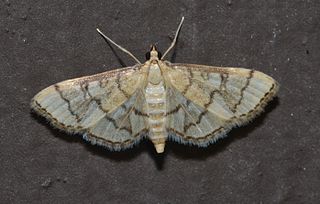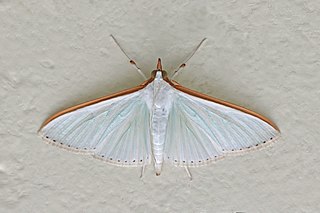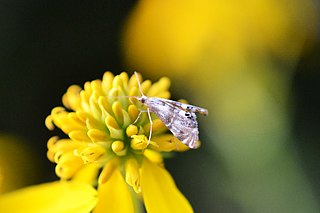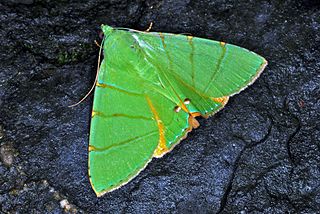Related Research Articles

Mimallonidae Burmeister (mimallonids), sometimes known as "sack-bearer" moths for the larval case-building behavior, are a family of Lepidoptera containing over 300 named species in 43 genera. These moths are found only in the New World, with most taxa occurring in the Neotropics. Adult moths are externally similar to those belonging to some of the other Macroheterocera families Bombycoidea and Drepanoidea, and thus have been variously treated as belonging to either one of these or other superfamilies.

Frederick Appleton Schaus was an American basketball player, head coach and athletic director for the West Virginia University Mountaineers, player for the National Basketball Association's Fort Wayne Pistons and New York Knicks, general manager and head coach for the Los Angeles Lakers, head coach of Purdue University basketball, and a member of the NCAA Basketball Committee. He was born in Newark, Ohio.

Eucereon is a genus of tiger moths in the family Erebidae. The genus was erected by Jacob Hübner in 1819.
Leucanopsis is a genus of moths in the family Erebidae. The genus was described by Alfredo Rei do Régo Barros in 1956.

Lophocampa is a genus of moths in the family Erebidae. The genus was erected by Thaddeus William Harris in 1841. It contains around 75 species.
Paracles is a genus of moths in the subfamily Arctiinae. The genus was described by Francis Walker in 1855. The species range from Panama to Patagonia, with quite a few in the southern temperate region of South America.

Saurita is a genus of moths in the subfamily Arctiinae. The genus was erected by Gottlieb August Wilhelm Herrich-Schäffer in 1855.

Trichromia is a genus of moths in the family Erebidae erected by Jacob Hübner in 1819. The members of this genus are largely indigenous to South America.

Blepharomastix is a genus of moths of the family Crambidae described by Julius Lederer in 1863.

Diaphania is a genus of moths of the family Crambidae.

Petrophila is a genus of moths of the family Crambidae. The genus was described by Lansdown Guilding in 1830.

Phostria is a genus of moths of the family Crambidae.

Syllepte is a genus of moths in the family Crambidae.

Eulepidotis is a genus of moths of the family Erebidae erected by Jacob Hübner in 1823.

Cyclophora is a genus of moths in the family Geometridae. Many species are referred to as mochas in reference to their colouration, primarily in Europe.

Schau, lieber Gott, wie meine Feind, BWV 153, is a church cantata by Johann Sebastian Bach. He composed it in Leipzig for the Sunday after New Year's Day and first performed it on 2 January 1724.

William Schaus was an American entomologist who became known for his major contribution to the knowledge and description of new species of the Neotropical Lepidoptera.

Desmia is a genus of moths of the family Crambidae. The genus was erected by John O. Westwood in 1832.

Apatelodes is a genus of moths of the family Apatelodidae first described by Packard in 1864.
Givira is a genus of moths in the family Cossidae.